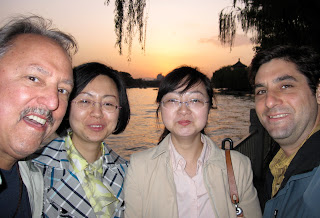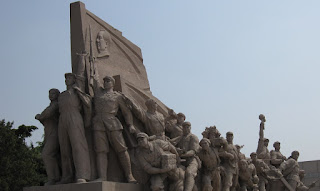Shanghai is China's largest city--with more than 19 million residents. 15 new buildings are erected in Shanghai every month. It's skyline reads like a major Financial newspaper cover--with the world's biggest brands in banking, hotels, and shopping filling the sky. It's location on a major Chinese waterway and coastline have made it a trading port of the world for centuries. And, of course, you can get a great cup of tea in Shanghai.

(Photo above: Shanghai's growing skyline seen from the rooftop of a famous tea house near the Bund.)


(Photo above: 15 new buildings go up in Shanghai each month--here is a handful of this month's offering.)


(Photo above: Shanghai's future is now.)





















